Recent Fire Damage Posts
Propane Safety 101: Tips for Safely Using and Storing Propane Tanks
11/16/2023 (Permalink)
Propane is a versatile and efficient fuel source used for a wide range of purposes, from home heating and cooking to powering outdoor grills and camping stoves. However, it is essential to handle and store propane tanks with care to ensure the safety of yourself, your loved ones, and your property. In this blog, we will provide you with essential tips for safely using and storing propane tanks.
Location Matter
When using propane tanks, it is crucial to keep them outdoors in well-ventilated areas. Never store or use propane tanks indoors or in confined spaces, including basements, garages, or sheds. Place tanks at least 10 feet away from doors, windows, vents, and other structures. Always keep tanks upright and on a stable surface.
Regular Inspections
Propane tanks should be inspected regularly for leaks, damage, or signs of wear and tear. Look for rust spots, dents, or any visible signs of damage. Check valve connections for leaks using a solution of water and dish soap. If you notice any signs of leakage or damage, address the issue immediately, either by repairing or replacing the tank.
Proper Cylinder Storage
Ensure that propane cylinders are stored in an upright position and secured in a well-ventilated, outdoor area away from ignition sources. Use a protective cap or plug for the valve outlet when the tank is not connected to a device. Protect tanks from extreme heat and direct sunlight, as excessive heat can cause pressure buildup and potential leaks.
Safe Transportation
When transporting propane tanks, always secure them in an upright position in a well-ventilated area of your vehicle, such as the trunk or an open truck bed. Keep the windows open during transportation to avoid any accumulation of propane fumes. Never transport more propane than is legally permitted, and always follow local regulations regarding transportation.
Proper Connection and Usage
When connecting a propane tank to an appliance, ensure that all connections are secure, and follow the manufacturer's instructions. Never use matches or lighters to check for leaks. Instead, use a leak detection solution or a mixture of soapy water to test for leaks. If you smell gas or suspect a leak, turn off the gas supply, vacate the area, and contact your propane supplier or authorities immediately.
Emergency Preparedness
It is essential to have a fire extinguisher designed for flammable liquid fires in close proximity to where propane tanks are being used or stored. Make sure you and your family know how to operate it. Additionally, have an emergency plan in place in case of a propane-related incident and make sure everyone knows the escape routes and necessary steps to take during an emergency.
By following these safety guidelines, you can enjoy the benefits of propane while ensuring the well-being of yourself, your family, and your property. Remember, always prioritize safety, and if you have any doubts or concerns, consult a propane professional for further guidance.
When Flames Meet Water: Understanding the Aftermath of Fire and Water Damage
8/14/2023 (Permalink)
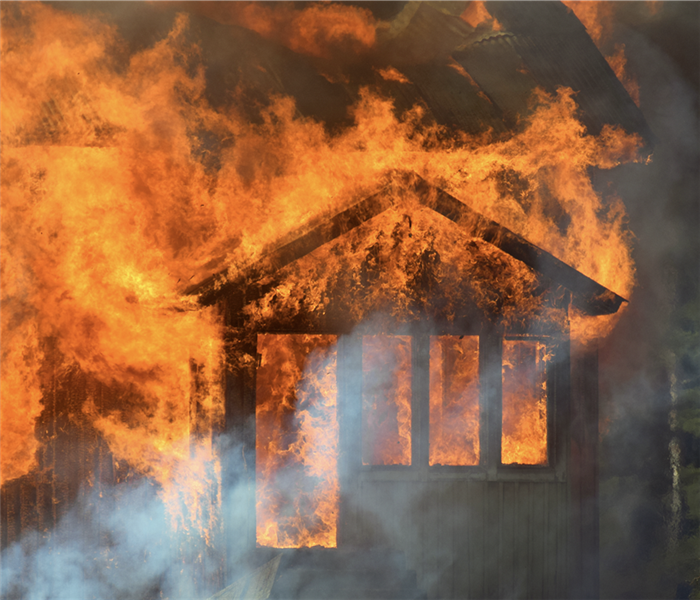 It's crucial to understand that the effects of fire extend beyond the flames themselves.
It's crucial to understand that the effects of fire extend beyond the flames themselves.
Experiencing a fire in your home or property can be a devastating event, and the immediate aftermath requires swift action to mitigate further damage. However, it's crucial to understand that the effects of fire extend beyond the flames themselves. When firefighting efforts come into play, water damage becomes a significant concern. In this article, we will explore the aftermath of fire and water damage, shedding light on the challenges homeowners face and offering valuable insights to help navigate the recovery process.
The Immediate Impact: Fire Damage
A fire can cause significant damage to your property, including structural damage, destruction of personal belongings, and the release of toxic smoke and soot. It's essential to prioritize your safety and contact the appropriate emergency services to extinguish the fire and ensure the area is secure before proceeding with any cleanup or restoration efforts.
The Secondary Culprit: Water Damage
While water is necessary to extinguish the flames, it can wreak havoc on your property. Firefighting efforts often involve large volumes of water, which can saturate building materials, penetrate walls and floors, and seep into hidden spaces. Water damage can lead to mold growth, structural instability, and deterioration of personal possessions if not addressed promptly and effectively.
Understanding the Challenges of Water Damage
Water damage presents unique challenges that homeowners should be aware of. Excessive moisture can weaken the structural integrity of your property, causing warping, swelling, and potential collapse. Additionally, prolonged exposure to moisture creates an ideal environment for mold growth, posing health risks to occupants and further complicating the restoration process.
Mitigating Fire and Water Damage
After ensuring your safety and contacting professionals, such as our SERVPRO of Ozone Park/Jamaica Bay team, to address the fire, it's vital to take immediate action to minimize the impact of water damage. Consider these essential steps:
- Safety first: Before re-entering your property, ensure that it is structurally sound and free from any hazards.
- Documentation: Document the extent of the damage through photographs or videos to assist with insurance claims.
- Professional assessment: Engage the services of a qualified restoration company to assess the extent of the damage, develop a comprehensive restoration plan, and initiate the drying process.
- Water extraction and drying: Professionals will utilize specialized equipment to remove standing water, dehumidify the space, and thoroughly dry affected areas to prevent further damage and inhibit mold growth.
- Salvaging personal belongings: Work with restoration experts to salvage and restore items that are salvageable and have sentimental or monetary value.
- Mold prevention: Implement proper ventilation and dehumidification measures to discourage mold growth and ensure a safe living environment.
- Restoration and reconstruction: Once the property is dried and sanitized, restoration experts can begin the process of rebuilding and restoring your home or property to its pre-fire condition.
Working with Insurance Providers
Contact your insurance provider as soon as possible to report the fire and water damage. Document all communication and keep detailed records of expenses related to cleanup, restoration, and temporary accommodations. Work closely with your insurance adjuster to ensure a smooth claims process and maximize your coverage.
Dealing with the aftermath of a fire involves addressing both fire and water damage. Understanding the extent and implications of these damages is crucial for an effective recovery process. By promptly engaging professional help, mitigating water damage, and working closely with insurance providers, you can navigate the challenging journey of restoring your home or property and move towards reclaiming your sense of security and normalcy. Remember, professional assistance and guidance are invaluable during this difficult time.
Removing Smoke Odor and Damage: How SERVPRO of Ozone Park/Jamaica Bay Can Help
4/10/2023 (Permalink)
 Call the professionals for smoke odor removal in your home
Call the professionals for smoke odor removal in your home
Smoke odor damage is a common problem homeowners face after experiencing a fire or smoke event in their home. Smoke odor damage occurs when smoke particles penetrate surfaces such as walls, ceilings, and floors, leaving behind a foul odor that is difficult to remove.
How is Smoke Odor Damage Difficult to Mitigate?
One of the main reasons smoke odor damage is difficult to mitigate is that smoke particles are incredibly small and can penetrate almost any surface. This makes it challenging to locate and remove all of the smoke particles, resulting in lingering odors that can last for years if left untreated.
Additionally, different types of smoke can produce different types of odors, further complicating the mitigation process. For example, a fire that burns natural materials such as wood or paper will produce a different odor than a fire that burns synthetic materials such as plastics or rubber.
Who Can Remove Smoke Odor and Smoke Damage?
While smoke odor damage is difficult to mitigate, it is not impossible. Professional smoke odor removal companies, such as SERVPRO of Ozone Park/Jamaica Bay, have the necessary equipment and expertise to locate and remove smoke particles and eliminate the odor left behind.
SERVPRO of Ozone Park/Jamaica Bay uses specialized equipment such as air scrubbers, thermal foggers, and ozone machines to remove smoke particles and odor from surfaces and the air. They also use cleaning solutions specifically designed for smoke odor removal to clean affected surfaces thoroughly.
In addition to removing smoke odor, SERVPRO can also help with other types of smoke damage, such as soot and ash residue. They have the expertise to clean and restore furniture, carpets, and other personal belongings affected by smoke damage.
Mitigating Smoke Odor Damage and Restoring Your Home
In conclusion, smoke odor damage is a difficult problem to mitigate due to the small size of smoke particles and the different types of odors produced by different types of fires. However, professional smoke odor removal companies like SERVPRO of Ozone Park/Jamaica Bay can help eliminate the odor and restore your home to its preloss condition. If you have experienced a fire or smoke event in your home, contact our SERVPRO team for assistance in removing smoke odor and damage.
Our process for removing smoke odor and damage ensures that your home is thoroughly cleaned and restored to its preloss condition. The benefits of professional smoke odor removal include improved indoor air quality, elimination of lingering odors, and a safer, healthier home environment.
Don't let smoke odor damage continue to impact your home and quality of life. Give our team a call today!
Tips for Making Your Dryer Fire Safe
8/27/2022 (Permalink)
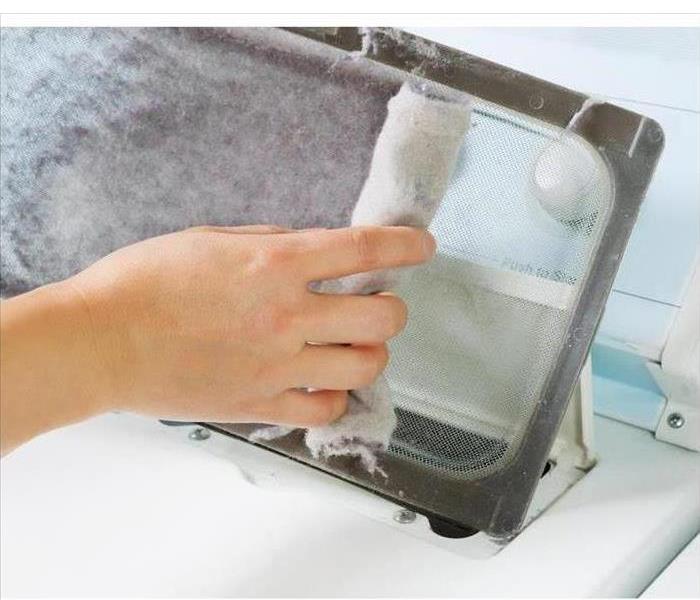 Prevent a dryer fire in your home
Prevent a dryer fire in your home
You can bet that any appliance in your home in Whitestone, NY, has been implicated in a home fire at one time or another. Your clothes dryer is no exception. That is because the dryer works by heating up either through an electrical or gas connection. The warmth you feel when retrieving the clothes from the dryer is evidence of enough heat to cause a lint fire. Therefore, it makes sense to treat your dryer accordingly. This means making sure it is well maintained and that the buildup of lint is cleared out from time to time. This will reduce the chances of a dryer fire, and it will probably improve the performance of your appliance.
Steps for Removing Lint
The process begins with a thorough cleaning of the lint screen. This takes six simple steps and will lessen your chances of a lint fire:
- Locate the screen
- Pull it out
- Remove lint by hand
- Wash the screen
- Vacuum out the vent
- Replace
The exhaust hose is also an area where you might see lint buildup. This should be cleaned, too, by removing the hose and shaking out the lint or using a brush. Finally, you should take a look at where the dryer vents out of your home. Any lint in this area should be removed by hand or by a vacuum. Whenever you have service on your dryer, you can also ask the service person if they can look out for lint buildup.
Steps for Dealing With a Lint Fire
If a fire does break out, you will probably need help dealing with fire damage. This requires a high level of training and experience to rid a home of the effects of smoke, soot, water and flames. A professional fire remediation franchise has seen it all. The technicians will employ a variety of cleaning methods and restoration principles to get your home in good shape. By keeping your dryer in good shape, though, you limit the chances of a home fire.
Electronics in the Aftermath of a Fire
5/27/2022 (Permalink)
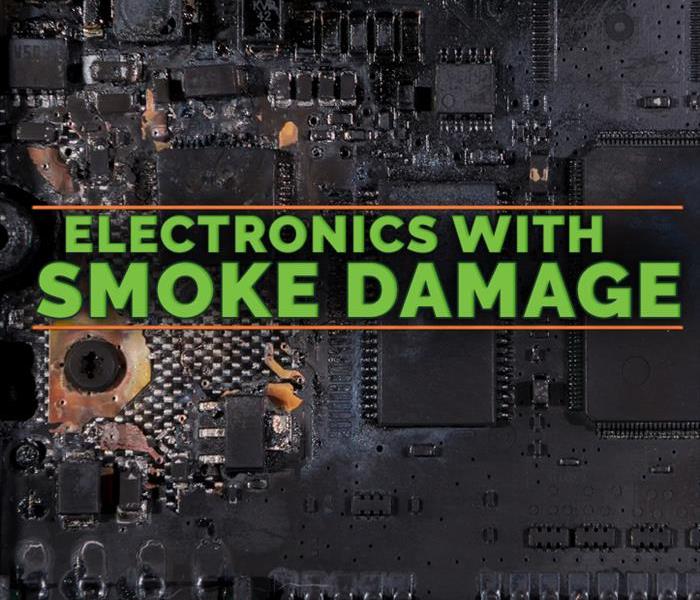 How does smoke damage electronics?
How does smoke damage electronics?
How Can Smoke Damage Electronics?
According to the National Fire Protection Association, 2019 saw firefighters responding to approximately 1.3 million fires, resulting in an estimated 14.8 billion dollars of damage. About 26% of these took place in home structures. Such events can be devastating, wreaking havoc. They can also be milder, depending on severity and response time. The contents of impacted buildings may suffer smoke damage along with scorching or burning. This may lead to a need for the services of a professional cleanup and restoration company in Rosedale, NY. One category of possessions that may be of special concern during fire cleanup is electronics, which are generally rather pricy and often more difficult financially to replace.
What Should You Do With Electronics After a Fire?
In order to minimize damage to devices like smartphones, laptops and hard drives, there are some tips you may want to follow during fire cleanup:
- Unplug any electronics and appliances
- Do not turn any of them on to avoid shorting out from water or too much soot
- Wipe residue off of the devices' surfaces
- Consult a professional for an assessment of any damage done
What Effects Does Smoke Have on Electronics?
When soot covers electronic gadgets, it can cause overheating, which can, in turn, lead to premature failure. The acidity in this substance may also corrode metal parts, leading to discoloration and a shortened lifespan. Smoke may also cause circuit shortages.
Can Electronics Be Saved After Smoke Exposure?
This depends on the severity of the harm done. In many situations, they can be preserved, but they need to be fully dry first. Swift action raises the likelihood of their survival. Even if one appears to be okay, the inner parts may still have sustained harm, so it is important not to simply assume they are fine because there are no outward signs of negative impact.
During fire cleanup, it is important to be cautious with electronics. Professionals know how to and have the equipment to properly clean your devices without causing further damage.
A Closer Look at Types of Fire Alarms
4/20/2022 (Permalink)
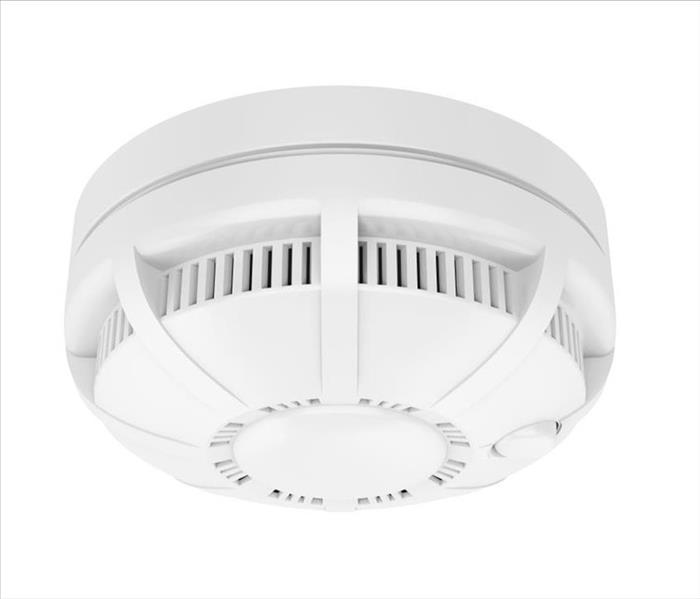 An Ionization alarm excels at detecting fires with open flames.
An Ionization alarm excels at detecting fires with open flames.
Two Main Types of Alarms On The Market
Home fires in the U.S. cause many injuries and millions of dollars in property damage. These devastating fires come from many sources, with the following causes among the most common each year:
- Cooking
- Heating appliances
- Electrical
- Smoking
- Candles
- Chemicals
The good news is that all of these fires can be detected by a modern fire alarm. When installed in a home in Jamaica Bay, NY, these units alert occupants of the presence of danger by loud noises and sometimes by visual signs. Many types can be purchased online and in stores. All are effective in reducing fire deaths and minimizing fire damage to property. Here is a closer look at the two main types of alarms on the market.
An Ionization Alarm
This type of fire alarm excels at detecting fires with open flames. It operates by using a bit of radioactive material inside the unit that sits between two electronically charged plates. A current of ionized air runs between the plates. When smoke enters this area, it breaks the current and sets off the alarm. These units should be installed in every bedroom and at least one on each floor of the house, including basements and attics.
A Photoelectric Alarm
This type of fire alarm is better at detecting smoldering fires. It uses a beam of light in a chamber and a light sensor. When smoke enters the chamber, it reflects the light toward the sensor and triggers the alarm. This technology is a solid choice to prevent smoke damage to a home. For even more protection, a person can get a combination alarm that uses both technologies just described. In the case of fire damage, a professional fire mitigation company can restore a home to its original condition. An experienced crew employs advanced equipment and proven techniques to clean and restore a home. Along with working fire alarms, a mitigation franchise is part of a solid protection plan against fire damage.
Creating an Effective Office Fire Escape Plan
3/18/2022 (Permalink)
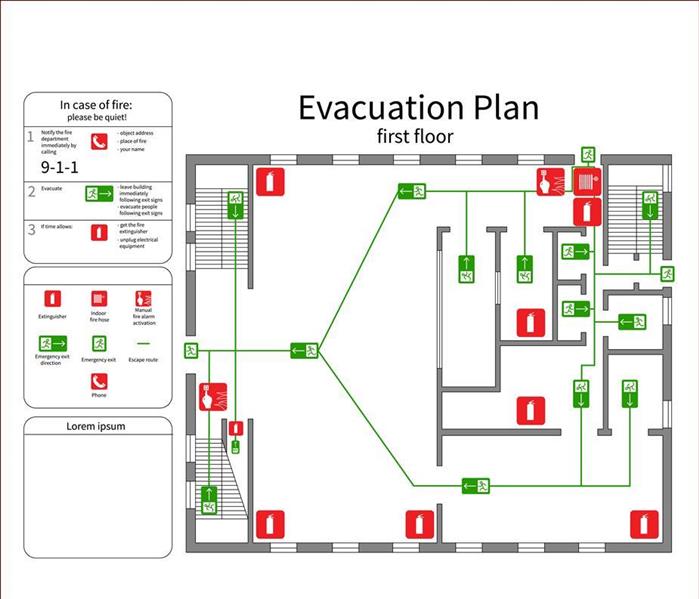 Evacuation route planning.
Evacuation route planning.
Developing a Fire-Escape Plan for Your Office
With the hectic daily operations of any business in Briarwood, NY, it’s often difficult to carve out time to prepare for emergencies. This is particularly true with smaller companies that don’t have mandated drills or contingency plans. However, it’s essential for any business owner to have an emergency escape plan in place to protect workers and assets. The following steps will help make sure you are prepared.
1. Assign Roles
The first step in creating a fire escape plan is to assign various workers to be in charge. A coordinator needs to be accountable for fire drills, extinguisher training and evacuation route planning. Every worker should know where the fire alarms are located so all employees can be immediately alerted to a problem. If your office has various floors, each floor should have a person designated to clear it and ensure workers are not left behind. It’s also a good idea to plan help for any employee who may have difficulty getting down the stairs.
2. Create a Chain of Command
Once employees are safe and the fire department is in control, there should be a person in charge to communicate protocols. This involves having updated contact information for all employees, so that instructions on contingency plans can be quickly sent out via a call tree or mass email. The supervisor or designee should have an offsite checklist with contact information to call the insurance company and a competent fire restoration company.
3. Prevent Problems
Although a good fire escape plan is essential, you always hope you won’t need it. The fire department will do an annual inspection of your property, so use this as a tool to identify areas of concern. Consider moving essential equipment or files into fireproof rooms and safes. Finally, make sure all exits are clearly marked and easily accessible.
Every business should have a detailed fire escape plan. It involves designating particular employees to be in charge of training and evacuation routes. If you have a clear chain of command, you will be prepared for potential fires and have the peace of mind that you are keeping your employees safe.





 24/7 Emergency Service
24/7 Emergency Service





